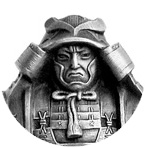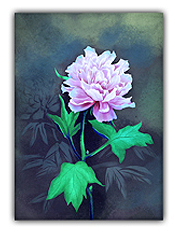Buddhism and Confucianism in Japan
Amalgamation of religions (abstract)
-
<...> The new religion in Japan was not forced. Nobody burned down pagan temples or put knives to people’s throats to make them accept the new gods. The Japanese nobles knew better. They favored the new religion but did not want to bite the hand that had fed them either so they amalgamated the old and the new, borrowing what they needed from different doctrines. The government fostered Buddhism and sent the younger members of the imperial family to serve as guardians in the monasteries, but at the same time continued to worship the old local gods, many of which were declared Buddhas. Generally speaking, Shinto symbolized the light and Buddhism the dark; they peacefully meshed together. Thus, the new state rested on the idea of concordance and was compared to a tree where “Shinto is the trunk, Buddhism represents branches and provides for green leaves of Confucian ethics covering them” (Shotoku Taishi). This kind of compromise was rare in history, as was the simultaneous penetration of two doctrines in one country during the same period.
Unlike China, Confucianism did not become a religion in Japan, although Confucian ethics became the deeply rooted state model. Also, the shenshi had not been formed as it had in China, but power remained in the hands of the Japanese aristocracy which was still intact. The Confucian model of rule was effective. This is why the Japanese tribal chiefs gladly adopted the best practices of their more advanced Korean and Chinese counterparts. After forming the imperial power and imparting a religious aura to it, a centralized state with the emperor at its helm quickly emerged. This change in polity was called the Epoch of Great Reform, or the Taika era.1 The government conducted a population census as the main national treasure, the land was made public domain, and the aristocrats became state officials in charge of managing it.

Samurai: Renunciation art by Tatiana Berg | Purchase print or painting | All Artwork<...> The principle of legality had become central to the Japanese mentality and remains strong up until today.
Thus, the Japanese Confucian state was established between the VI-VIII centuries. This state fit in with the traditional model of early feudalism and followed the general historical pattern. At the same time, the existence of an aristocracy and the expansion of the empire by force which created a warrior class threatened the centralized state of Confucian tradition. These groups were not willing to put up with government infringement on their liberties and rights. The question was would state machine break down? Or would it grind down the bones of those who tried to oppose it?
Beware!
There’s a man with a storm in his eyes and a sword in his mighty hand!
Who can stand against him?
read the chapter further in the bookBack to the Blog
This is a chapter from Samurai: Spirit of the Warrior by A. R. Berg


